Abstract
A large number of media have been tested for cultivating Microthris parvicella, a filamentous microorganism often present in the activated sludge of oxidation ditches. The bacterium was found to utilize oleic acid (preferably as Tween 80) as the sole source of carbon and energy. Sulfur is required in the reduced form. The tested media vary from a complex to a chemically defined medium. Growth yields of 1.3 to 1.5 g/liter were obtained on media containing Tween 80 (4 g/liter), reduced nitrogen and reduced sulfur compounds, calcium and magnesium salts, phosphate buffer, trace elements, thiamin, and cyanocobalamin. The optimum temperature for growing the organism is approximately 25 degrees C, and the pH of the nutrient medium should be above 7.
Full text
PDF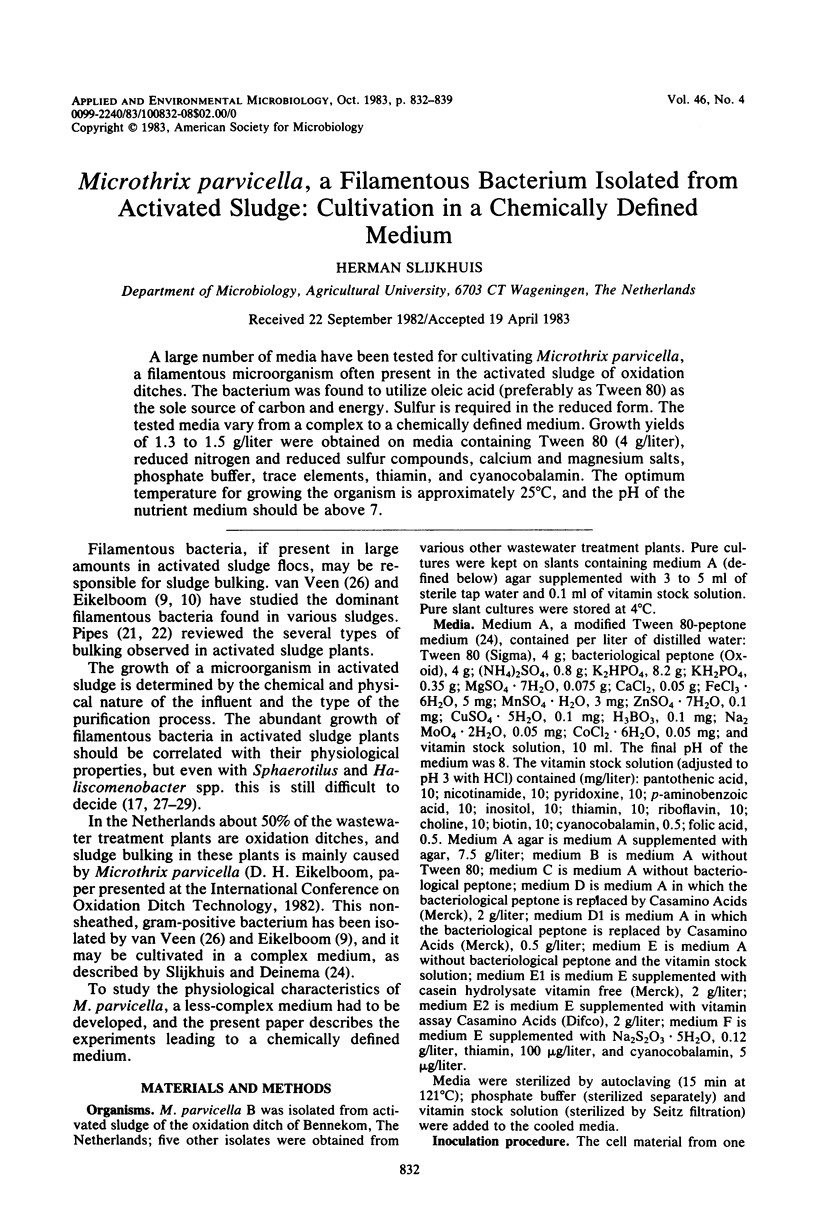
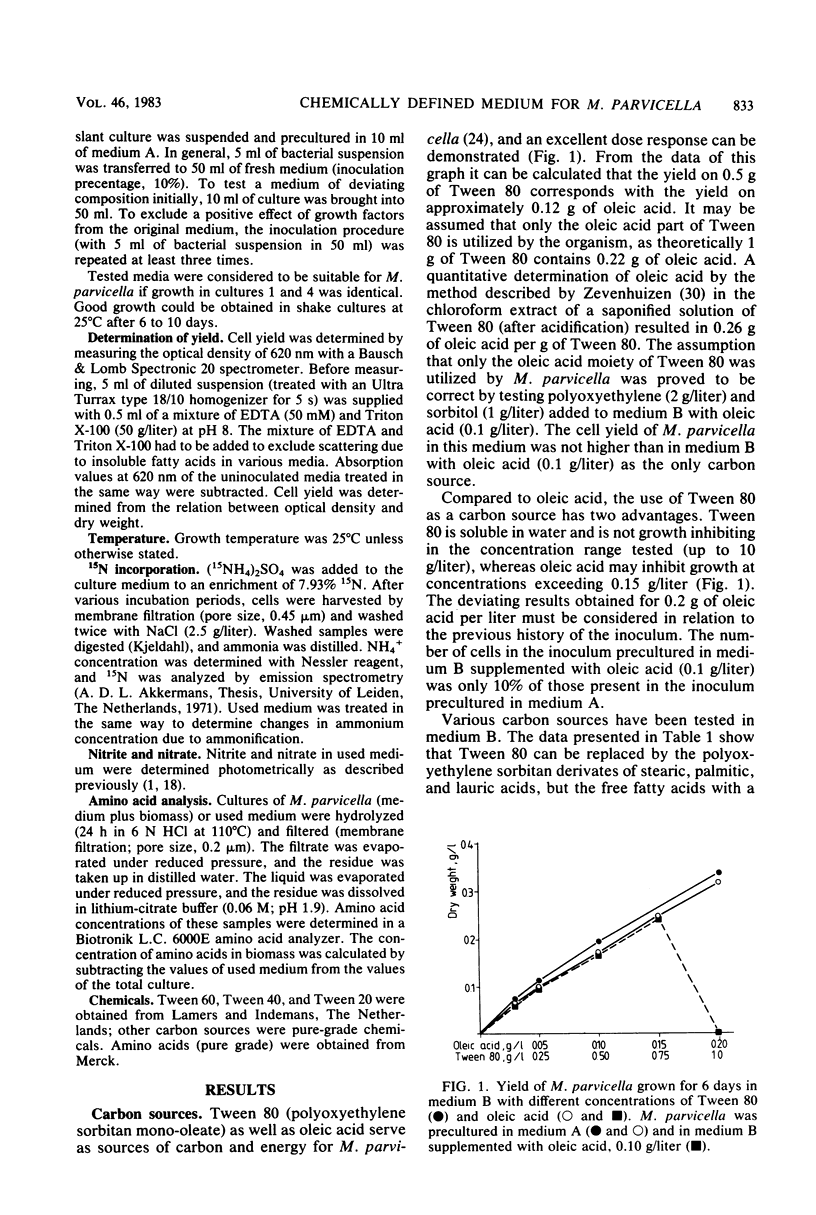
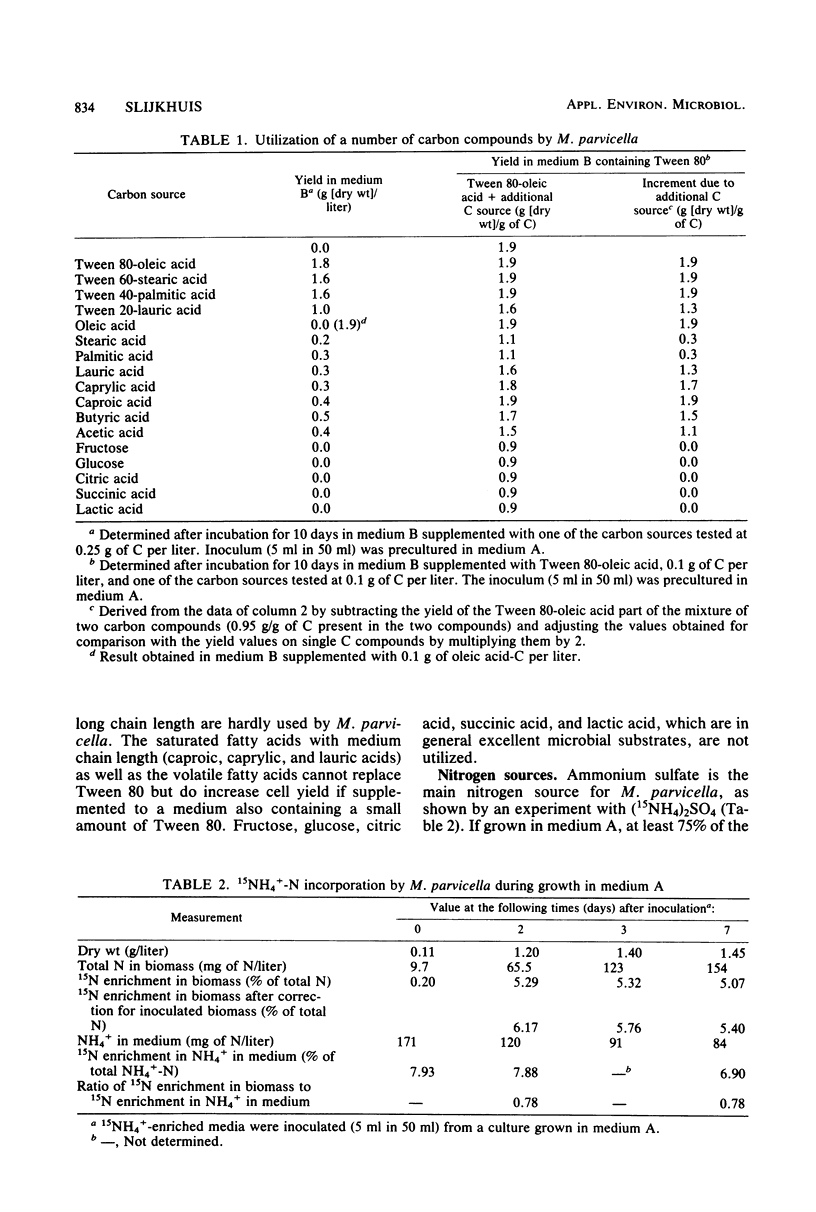
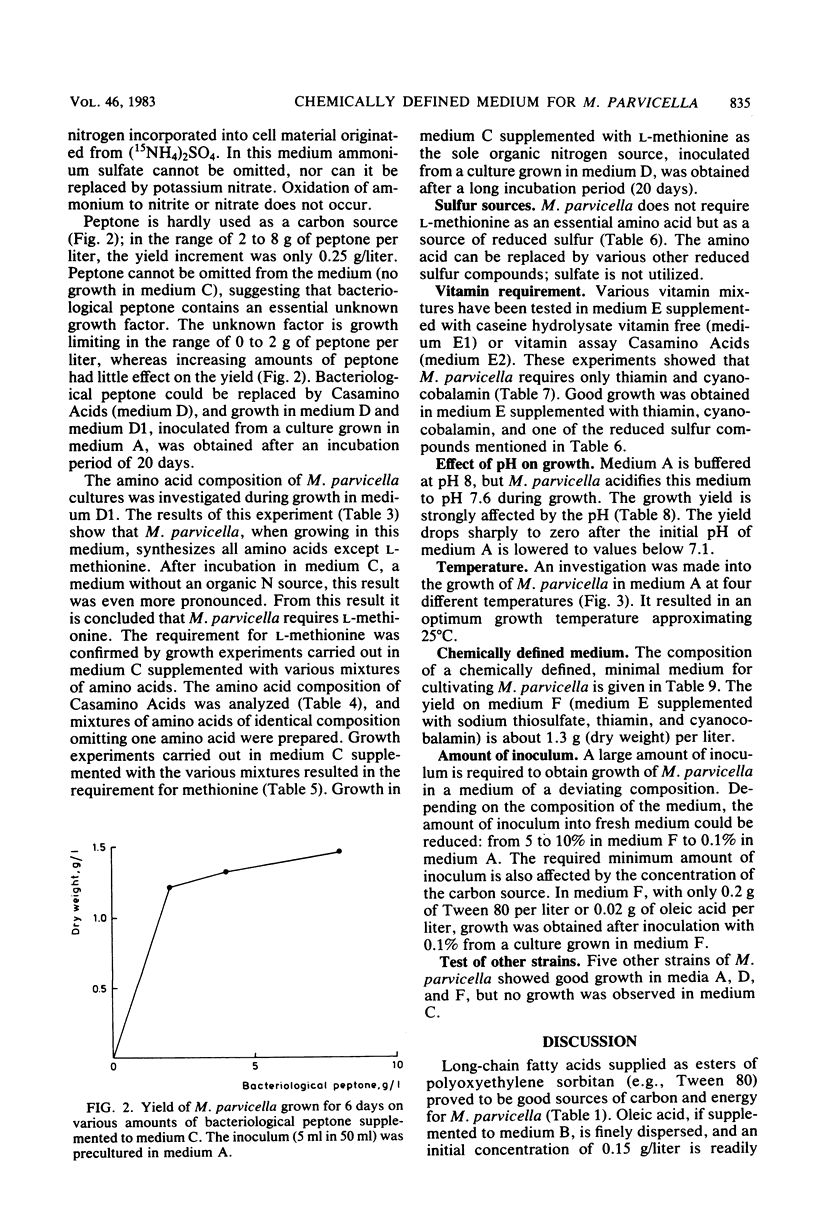
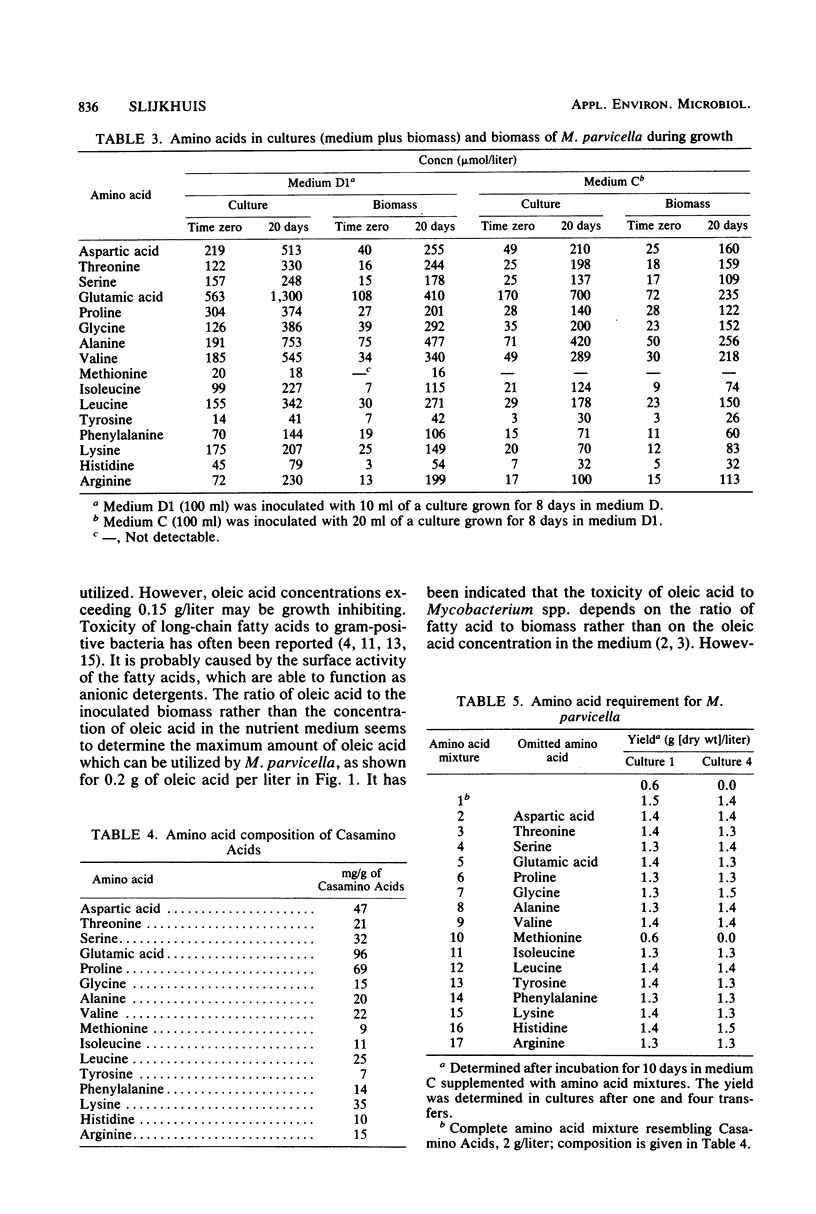
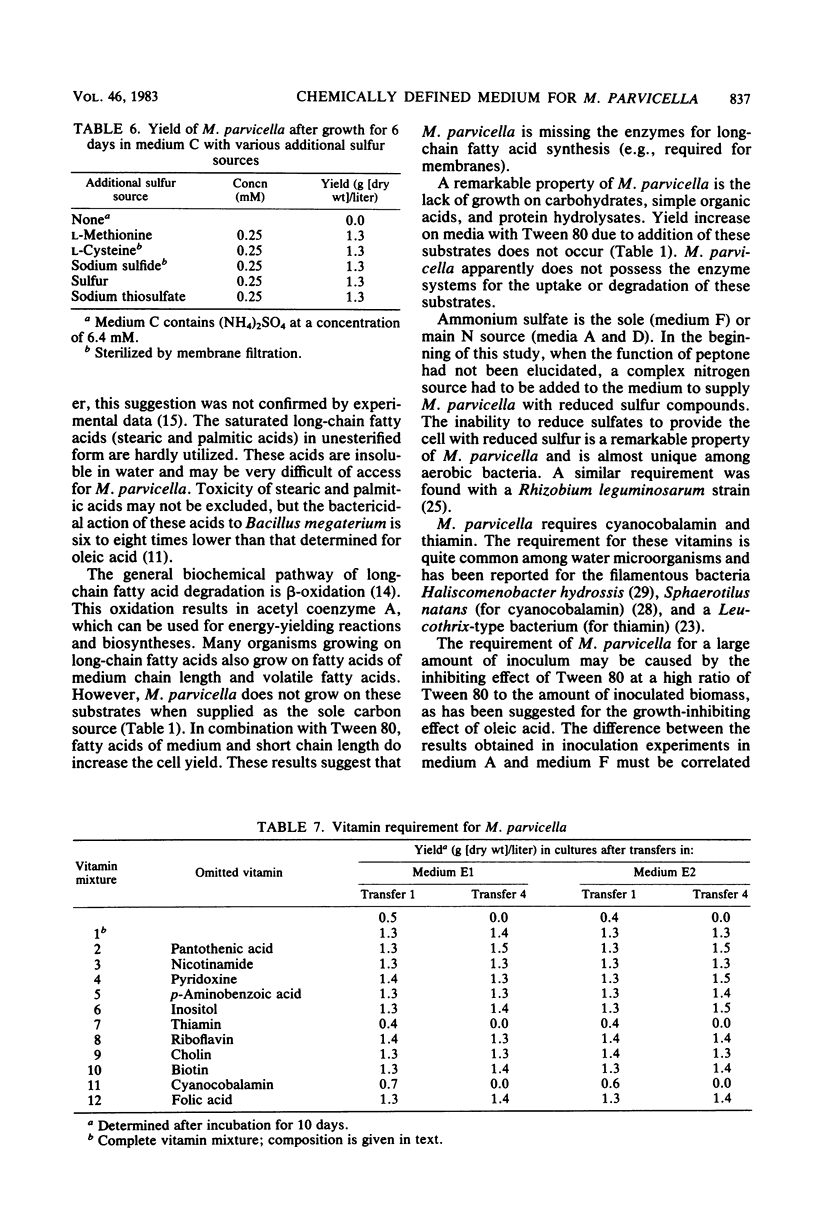
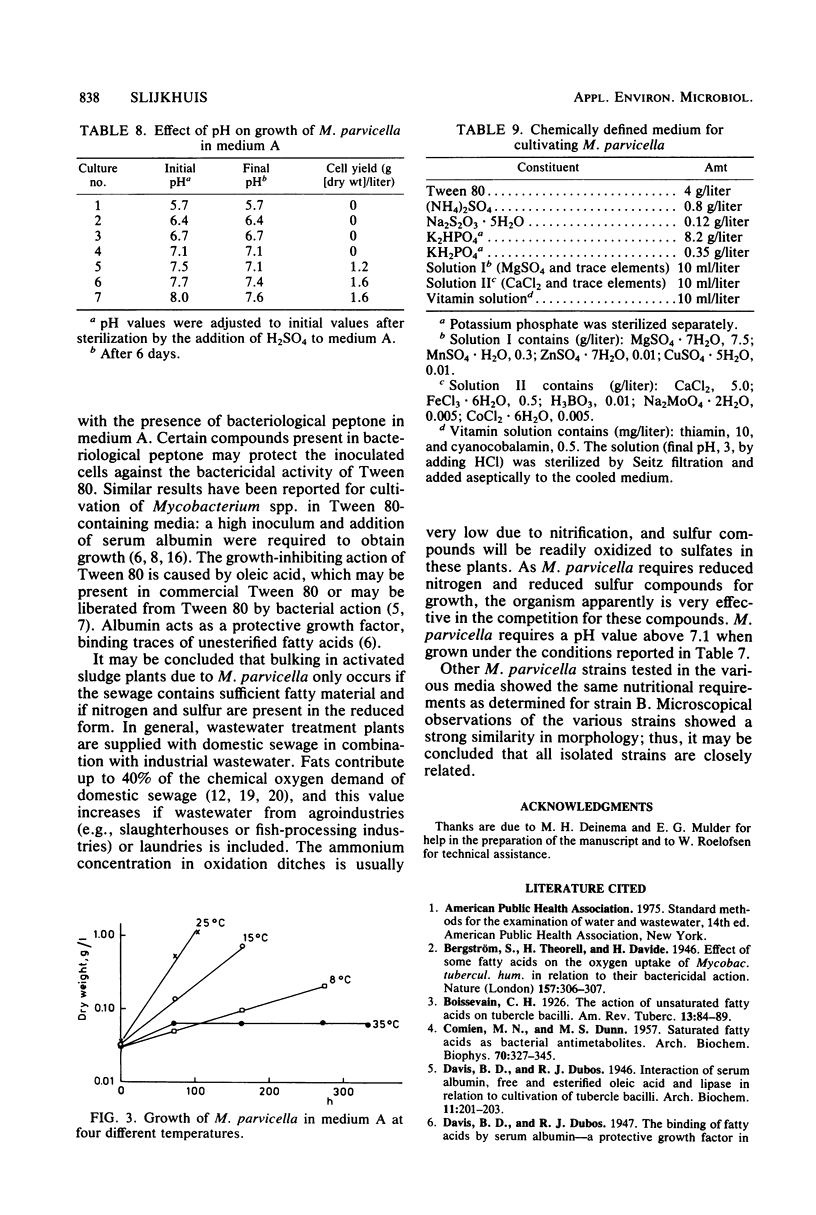
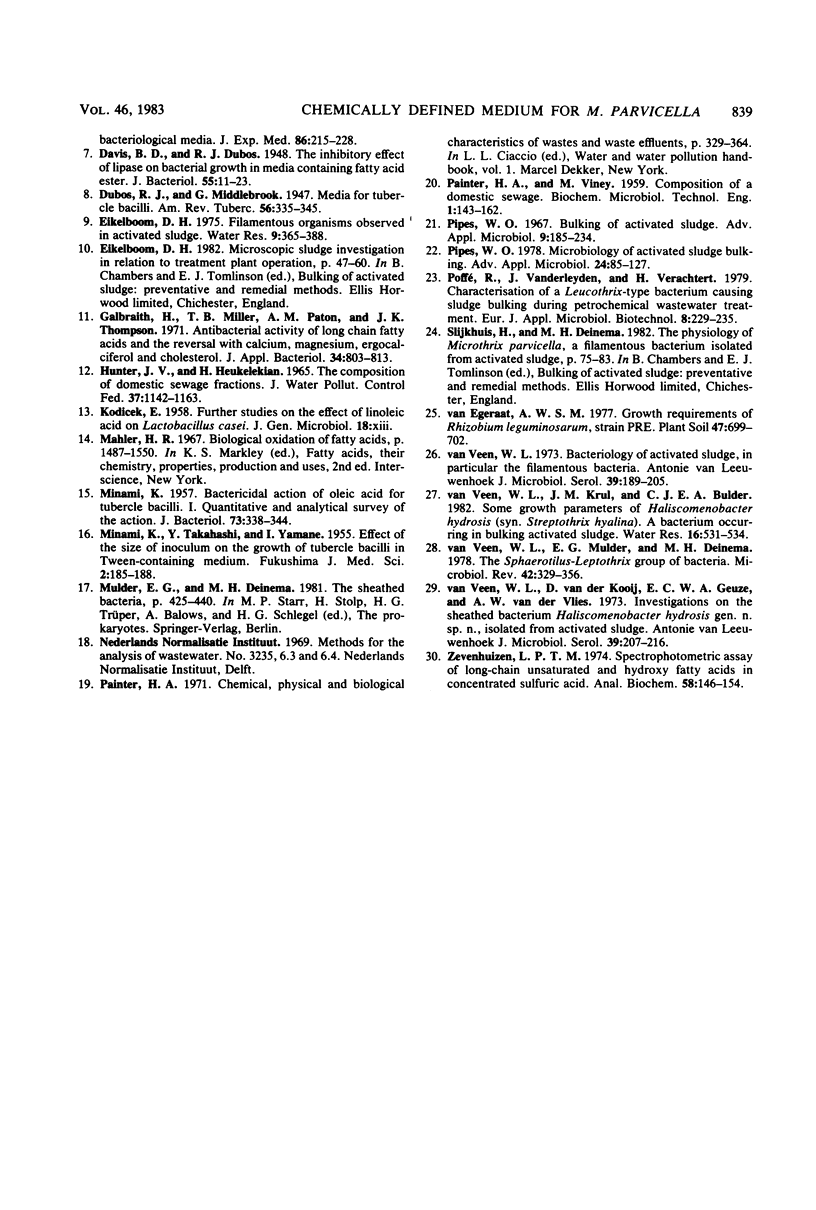
Selected References
These references are in PubMed. This may not be the complete list of references from this article.
- CAMIEN M. N., DUNN M. S. Saturated fatty acids as bacterial antimetabolites. Arch Biochem Biophys. 1957 Aug;70(2):327–345. doi: 10.1016/0003-9861(57)90121-2. [DOI] [PubMed] [Google Scholar]
- Davis B. D., Dubos R. J. The Inhibitory Effect of Lipase on Bacterial Growth in Media Containing Fatty Acid Esters. J Bacteriol. 1948 Jan;55(1):11–23. doi: 10.1128/jb.55.1.11-23.1948. [DOI] [PMC free article] [PubMed] [Google Scholar]
- Galbraith H., Miller T. B., Paton A. M., Thompson J. K. Antibacterial activity of long chain fatty acids and the reversal with calcium, magnesium, ergocalciferol and cholesterol. J Appl Bacteriol. 1971 Dec;34(4):803–813. doi: 10.1111/j.1365-2672.1971.tb01019.x. [DOI] [PubMed] [Google Scholar]
- MINAMI K. Bactericidal action of oleic acid for tubercle bacilli. I. Quantitative and analytical survey of the action. J Bacteriol. 1957 Mar;73(3):338–344. doi: 10.1128/jb.73.3.338-344.1957. [DOI] [PMC free article] [PubMed] [Google Scholar]
- Pipes W. O. Bulking of activated sludge. Adv Appl Microbiol. 1967;9:185–234. doi: 10.1016/s0065-2164(08)70529-x. [DOI] [PubMed] [Google Scholar]
- Zevenhuizen L. P. Spectrophotometric assay of long-chain unsaturated and hydroxy fatty acids in concentrated sulfuric acid. Anal Biochem. 1974 Mar;58(1):146–154. doi: 10.1016/0003-2697(74)90451-5. [DOI] [PubMed] [Google Scholar]
- van Veen W. L. Bacteriology of activated sludge, in particular the filamentous bacteria. Antonie Van Leeuwenhoek. 1973;39(2):189–205. doi: 10.1007/BF02578852. [DOI] [PubMed] [Google Scholar]
- van Veen W. L., Mulder E. G., Deinema M. H. The Sphaerotilus-Leptothrix group of bacteria. Microbiol Rev. 1978 Jun;42(2):329–356. doi: 10.1128/mr.42.2.329-356.1978. [DOI] [PMC free article] [PubMed] [Google Scholar]
- van Veen W. L., van der Kooij D., Geuze E. C., van der Vlies A. W. Investigations on the sheathed bacterium Haliscomenobacter hydrossis gen.n., sp.n., isolated from activated sludge. Antonie Van Leeuwenhoek. 1973;39(2):207–216. doi: 10.1007/BF02578853. [DOI] [PubMed] [Google Scholar]


